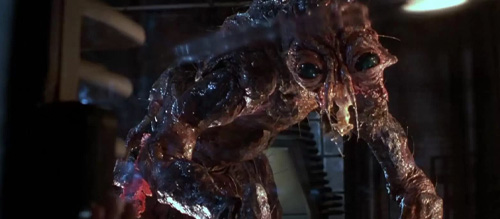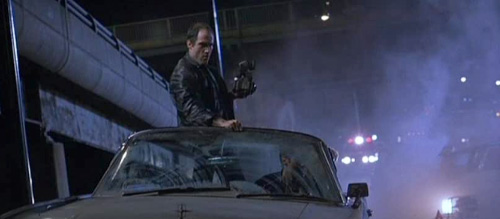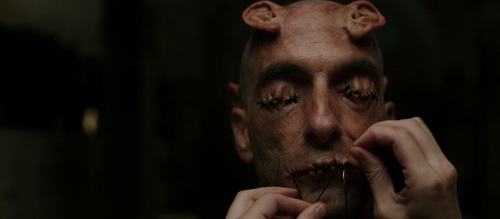Where to Start with David Cronenberg
Where to start with David Cronenberg? That is the ultimate question. This Cannes Jury Prize winner is possibly one of the most unparalleled filmmakers currently working, with not a single one of his films being any less than utterly uncanny and an unforgettable voyage into trippy landscapes of outlandish territory.
Cronenberg’s allegiance to the creative industry is burrowed within his veins, with his mother being a musician and his father being a writer/editor. His first instances of being fascinated by the craft were through watching Un Chien Andalou (1912), Vampyr (1932), and Performance (1970) at an early age, as well as reading the entire catalogue of EC horror comics. The passion that Cronenberg gained developed into a burgeoning desire to create monumental films himself.
When David Cronenberg was at university, he was introduced to filmmaking, making Transfer (1966) and From the Drain (1966), two short 16mm films whose eerie charisma combines with grainy realism to create grim terrains and ‘unique’ characters. Cronenberg’s tenacious touch with lucid realities was always evident, even in the early days.
This is when he took the leap to becoming a full-time filmmaker, forging abnormal works that would change the course of experimental cinema and lay the ground for eccentricity to thrive. His third film, Shivers (1975), paved the way for his iconic body horror status to seep into his filmic modus operandi, resulting in studios commissioning further gnarly works including Rabid (1975), The Brood (1979), and Scanners (1981). The late 1970s to early 1980s saw the wrath of Cronenberg’s unorthodox cinema, dripping in idiosyncratic worlds, become a core part of genre cinema.
This monumental director has taught filmmakers to embrace the uncommon and explore the peculiar, encouraging cinemagoers the world over to pursue their passion of making films even when their filmic visions do not suit the blockbuster climate of their time. This advantageous filmmaker is an icon within his field, with his surname even becoming an adjective to explain twisted body horror films. In honour of this quintessential director, The Film Magazine explores exactly Where to Start with David Cronenberg.
1. The Fly (1986)

The Fly defines what Cronenbergian horror stands for. It’s a morbidly absurd piece of cinema that leaves a damning mark on the viewer’s filmic sanity, with the grotesque but glorious practical effects and the film’s roots of psychological disarray establishing a more than memorable, truly stellar offering.
Jeff Goldblum portrays Seth, a scientist who slowly transforms into a human sized fly after a science experiment goes wrong. The Fly takes a rather archetypal premise of humans interfering with ‘alien’ technology and completely desecrates it, ripping apart the borders of predictability to create a film of visual excellence. Seth’s metamorphosis into a winged insect is nothing less than nightmare fuel; even the sternest of viewers is challenged in their attempt to maintain composure amidst all of the fantastic gore and lurid body horror that aided in creating Cronenberg’s masterly reputation.
Cronenberg worked closely with Chris Walas and Stephan Dupris from the effects team, to engulf Seth with pus-ridden, gaping wounds, decaying swallowed flesh, and oil-soaked hair. Essentially, the ambitious scientist had mutated into a gigantic vermin-like beast who had been stripped of both moral and physical dignity. These effects were done all by hand. One particular scene in the final act shows Seth at his worst. In the original DVD extras for The Fly, it was revealed that Goldblum was briefly replaced by a giant puppet that had to be ventriloquised by invisible string and metal rigs, meaning that every single movement took hours to film.
2. Crash (1996)

As most of his filmography establishes, David Cronenberg works with contentious matters to both confront and perplex the spectator. If anyone were to not feel completely emotionally obliterated after a Cronenberg screening, then something must have gone wrong. To phrase it lightly, Crash is the most daring entry amongst Cronenberg’s twenty-two feature films.
Crash explores the world of symphorophiliacs (those who seek titillation from disaster, often automobile incidents) through the narrative of a film producer (James Spader) who, after surviving a near-fatal car accident, becomes involved in a dangerously erotic community. The film is a feast for the senses. It displays such intensity amidst a colloquially immoral landscape, leading each of us to become voyeurs in events that are far from ordinary; it’s an escapist, delusionally hedonistic piece of cinema.
The film’s message has a deliberate lack of subtly, with Cronenberg emphasising the strange allure of horror, the odd appeal of witnessing something that general audiences deem taboo and forbidden. In its most primal form, Cronenberg soaks every frame in shock value to inflict a nihilistic, macabre commentary on ultimate liberation.
Crash received an almighty torrent of backlash upon its initial release. The hysteria from censors and the public ruminated the video nasty panic back into the media in the mid-1990s, with Westminster Council banning the film from being screened anywhere in central London due to the media’s smear campaigns against the film. This hybrid horror and erotic thriller drove the mainstream media to their cinematic borders, intruding on the boundaries of ‘the norm’. And if there is one lesson to take away from the canon of Cronenberg’s work, it’s that he is a defiant director who aims to shed light on the unutterable.
3. Crimes of the Future (2022)

David Cronenberg’s career stretches across five decades. And, amongst those years, his auteurship has adapted and evolved. When comparing The Brood (1979) with eXistenZ (1999), a film twenty years its senior, Cronenberg’s methodology certainly differs, with his early filmmaking days in the 1970s surrounding the significance of body invasion rather than the threat of modern tech narratives that advanced in the late 1990s. However, one aspect that has not differed in the slightest throughout his entire filmography is the matter of effect.
Cronenberg’s latest feature, and Palme d’Or contender, Crimes of the Future, was based on an independent film he made in 1970, chronicling a terrifying future where live surgeries are performed as art. Starring an outstanding line-up including Kristen Stewart, Viggo Mortensen, and Léa Seydoux, Crimes of the Future is a film that can not only be described as disturbingly horrifying, but rather beautiful.
Crimes of the Future sheds a harsh light on human evolution, with Cronenberg enacting visceral imagery such as ripped flesh and bruised body modifications to highlight how pain is crucial to the makeup of humanity. The film makes clear that the participants in these live surgeries lack pain. Their receptors are barren, leading to the exploitation of their own numbing powers. However, whilst the dystopian society lives vicariously through the dedication to art and bodily freedom, a rooted understanding of compassion and body autonomy is lost. Crimes of the Future diligently commends the hysteria, panic, and pain that comes from being alive. It may not feel soothing to the soul at first, but without the exhausting agonies that come with being alive, there is nothing to strive for.
Recommended for you: Where to Start with David Lynch
David Cronenberg’s message is extremely abhorrent and cruel, even painful in its display of misanthropy. But this is precisely why Cronenberg has maintained a tight hold on audiences for decades. His work is confronting, unpleasant, and far from calm. And more importantly, his filmography is unforgettable.

